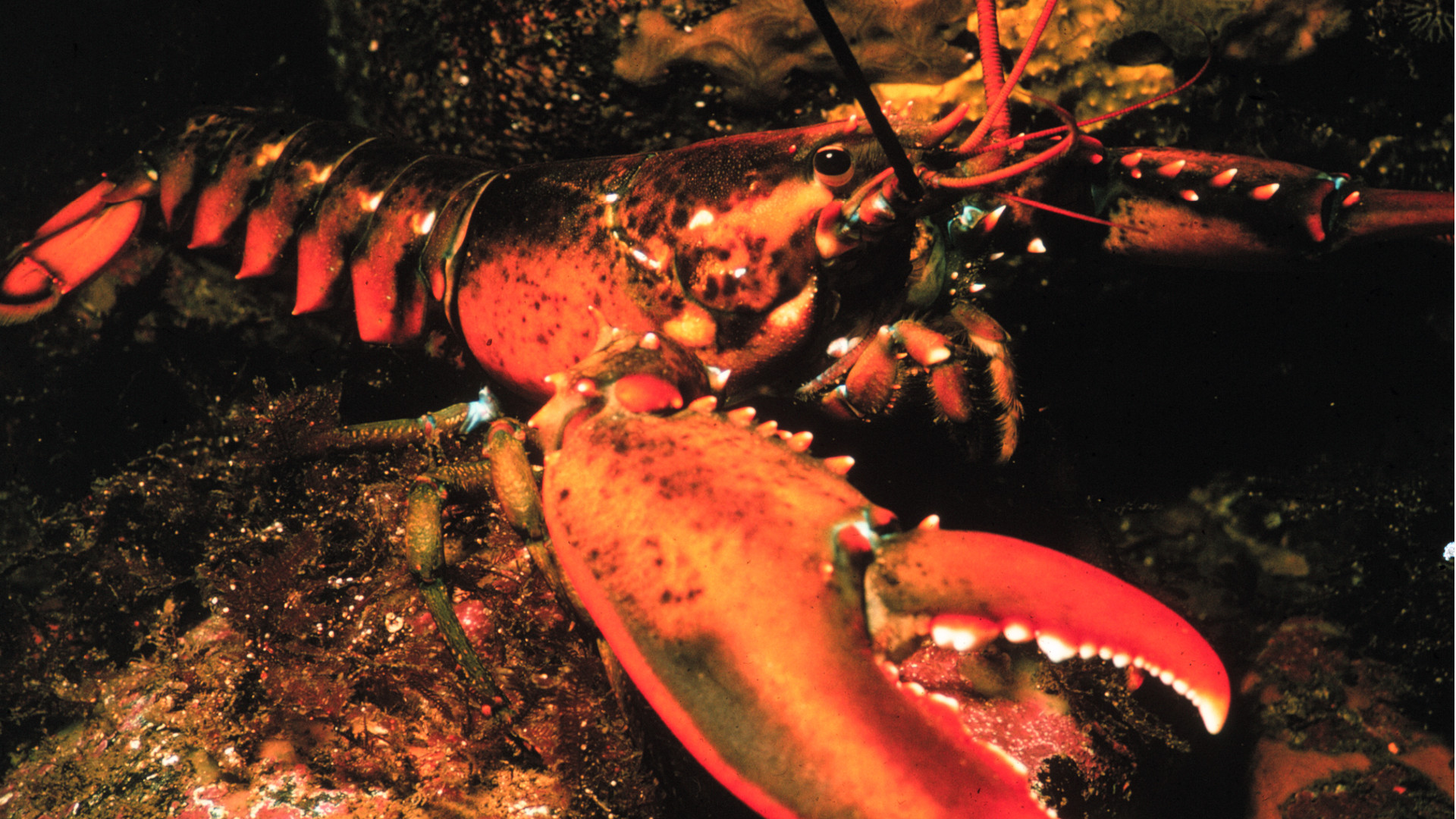Last week about 200 marine scientists and fishermen from 12 different countries gathered at the International Lobster Conference to try to answer that question.
The conference, held every four years, kicked off in Portland, Maine — where, according to the state’s department of marine resources, 73.9 percent of the fishing economy is reliant on lobster.
“This wasn’t just a forum on the American lobster, because there’s a lot of concern all over the world about how climate change affects all important [lobster] species,” says Andrew Pershing, the chief scientific officer at the Gulf of Maine Research Institute, a marine science center in Portland that cosponsored the event.
The Gulf of Maine Research Institute made headlines back in 2015 when Pershing and his team found that the gulf is warming faster than 99.9 percent of the world’s oceans, a situation linked to the collapse of Maine’s cod stocks. This revelation caught the eye of NASA, which later awarded the institute a $6.5 million grant to continue its research and create a new educational program focused on science literacy and problem-solving related to climate change.
The Gulf of Maine’s increase in water temperature (from an annual surface mean increase of .25 degrees Celsius in 2001 to higher than 2 degrees Celsius in 2012) is having measurable effects on Maine’s lobster populations. Pershing says this could prove problematic to the lobster industry, which, valued at $533 million a year, is the second-most valuable fishery in the United States and the economic heart of Maine.
“2016 was the second-warmest year on record for the Gulf of Maine,” said Pershing. “We have a fishery here in Maine that’s highly dependent on a single species, so the fate of that species is going to determine in many ways the economics of the coast of Maine.”
Currently, the warming trend is actually resulting in an increase in lobster populations in the waters of the Gulf of Maine. Last year Maine’s lobstermen broke records by hauling in 130 million pounds of the crustacean in a single season, up from 110 million pounds the 5 years before, and 40-50 million pounds in the mid-90s.
But that may not last. According to Pershing, lobster populations are moving north to areas that were once too cold for them, like Canada’s Gulf of St. Lawrence, where Maine lobstermen cannot legally operate. That makes it a challenge to predict the long-term effects this will have on the industry.
Although Maine is experiencing a bit of a lobster boom right now, Pershing and the other industry experts from the state say the concern is the market’s ability to adapt to this unpredictability in the wake of other effects climate change can have on lobster populations.
“At what point are we going to start to move and tip over? Are we at peak lobster now, or is that a few years in the future?” asked Pershing. “We’re working on answering that question now.”
Lobsters are sensitive creatures. Dr. Jason Goldstein — a lobster biologist and research director at the Wells Reserve, a 2,250 acre estuarine and salt marsh nature reserve in southern Maine — was in attendance at the conference and explained to me other ways climate change can impact where lobsters live in great numbers.
“It all comes down to the temperature of the water, the salinity of the water, and the pH level of the water,” says Goldstein. “The bigger picture is that we’re going to see periods where the available habitat for lobsters is going to change. It’s going to shift the distribution of larvae, juveniles, adults and egg-bearing females, which will affect future stocks.”
According to Goldstein, temperature acts as the main factor determining where lobsters are going to live and mate. Lobsters like a chilly 53-64 degrees Fahrenheit. But there are other factors to consider too.
The ice caps’ melting slowly decreases the salinity of the water; if lobsters live in water whose salinity is less than 32 parts per thousand, their metabolism decreases.
“This could potentially again change the distribution of where they’re hatching,” says Goldstein. “We’re not sure of the magnitude of it yet.”
Another anticipated factor is ocean acidification, the buildup of carbonic acid (exacerbated by climate change) in ocean waters, which lowers the water’s pH, making it more acidic.
“Lobsters communicate chemically,” explains Goldstein. “This could influence behavior, mating, movement and distribution. A lower pH could also have big implications for larval development.”
Dr. Goldstein said that warming waters also bring new predators to Maine’s marine habitats, such as an increase in black seabass, squid, and eels, all of which eat young lobsters.
“What all this means for a fishermen in Maine is potentially fishing in deeper waters, spending more fuel to get out there, spending more time, and experiencing wear and tear on your boat,” says Goldstein. “Lobsters have the advantage of being highly mobile.”
Fuel costs are already a concern for Maine’s lobstermen. According to the U.S. Energy Information Administration, diesel fuel used to power lobster boats has gone up from $1.11 a gallon in 1994 to $4 a gallon in 2014. Fuel can represent more than half a lobsterman’s daily budget, with some spending up to $100–200 a day, and this number can be expected to rise as lobstermen attempt to scope out their prey’s new territories.
RIchard Wahle, the co-chair of the lobster forum and the research professor at the University of Maine School for Marine Science, says that it all comes down to stewardship and protecting the egg-bearing females. Wahle noted that warmer waters could also be linked to increased cases of shell disease, a bacterial infection that eats away at lobsters’ shells, rendering them unmarketable. Fishermen from Connecticut and New York have seen their stocks devastated by the disease in an outbreak of cases from Long Island Sound.
“We’re starting to see a high prevalence of shell disease here in Maine,” said Wahle. “The fishermen don’t want to see what happened in southern New England. Unfortunately, that’s one more thing that may be out of their control.”
© Francis Flisiuk, all rights reserved
Previously in The Revelator:
Whooping Cranes Could Be Wiped Out by Climate Change



2 thoughts on “Lobsters in Hot Water: Climate Change Threatens Maine’s Most Valuable Fishery”
Comments are closed.